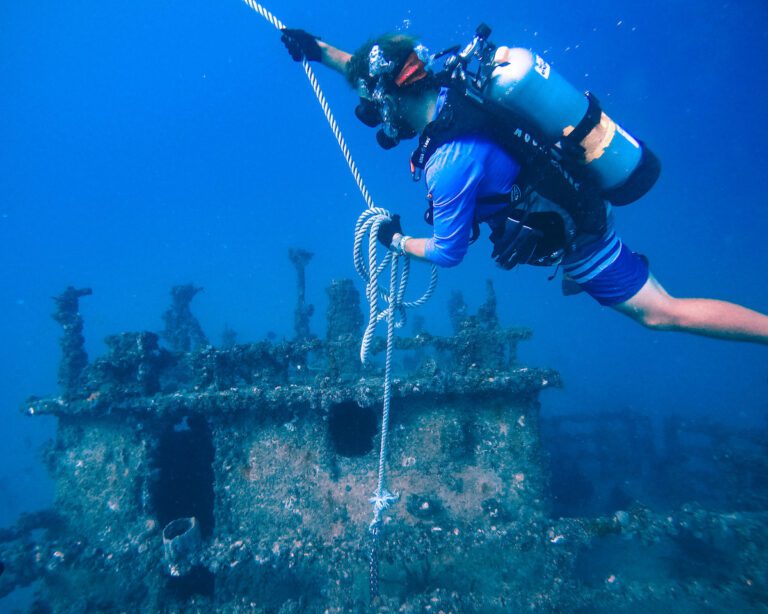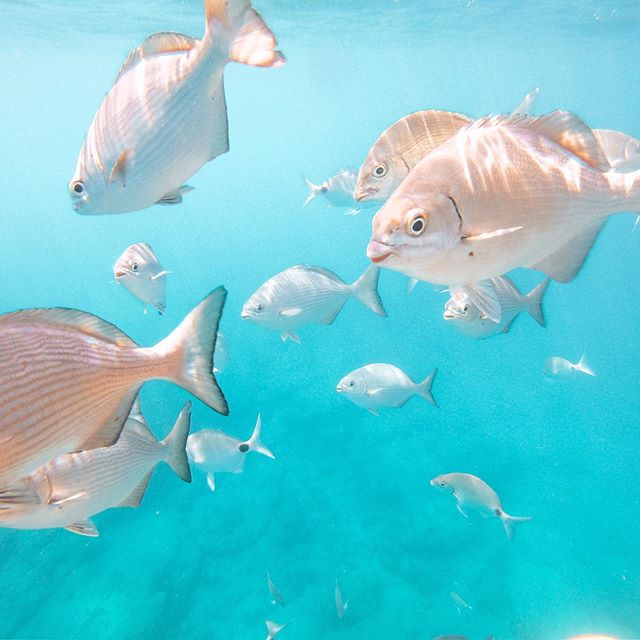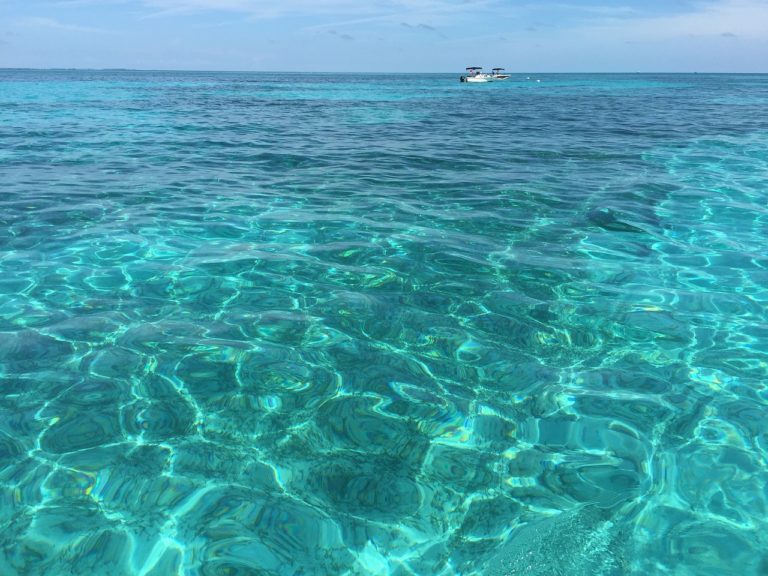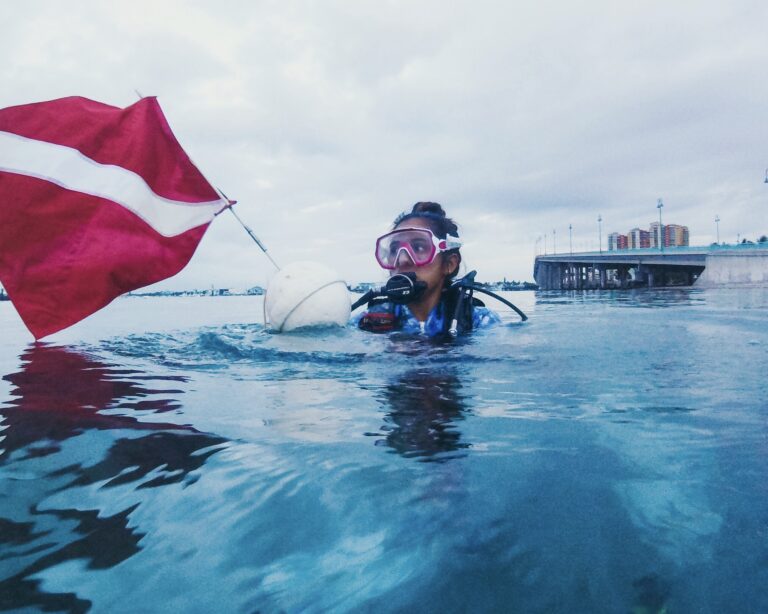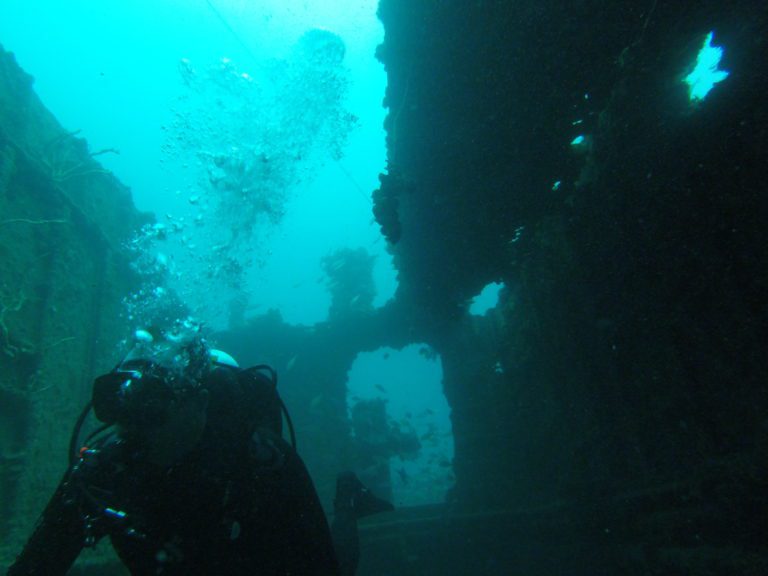Complete Guide to Buying a USED Scuba Tank
Considering buying a used scuba tank? Here’s what you need to know before you buy.
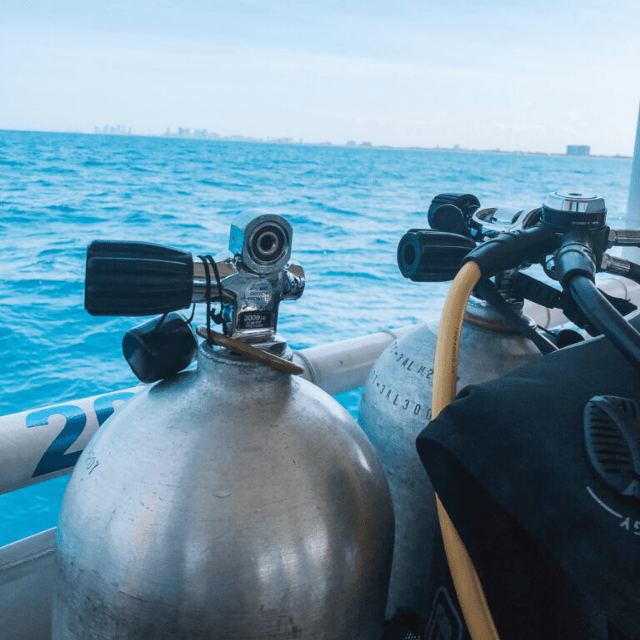
It’s no secret – scuba equipment is expensive. Like really expensive. So naturally, to save a buck or two, it’s common practice for divers to find some secondhand gear.
And when it comes to scuba tanks, it’s no different. After all, a scuba cylinder is a HUGE investment. So why wouldn’t you try to save some money if you could?
But we get it. Scuba gear, particularly a scuba cylinder, is literally life supporting. Which is why it seems most people tend to buy new. However, with a careful eye and a little bit of knowledge, you can literally save $100s by buying a used scuba tank. You just need to know what to look for…
The rest of this article will give you a detailed overview of what you should look for, which questions you should ask, and how to calculate whether or not it’s worth buying a new or used scuba tank.
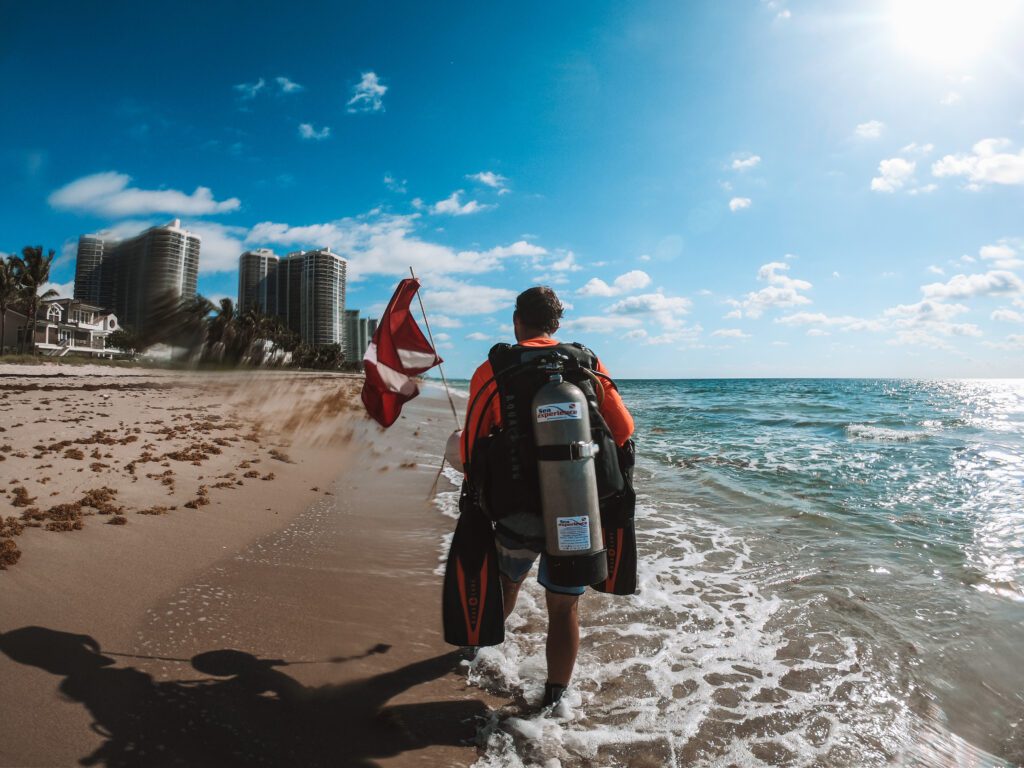
But first, some scuba tank terminology
For those of you who are new to scuba, here’s some basic terminology for scuba tanks:
- Cylinder: the main part of the tank. The metal “barrel” that contains the air. Typically, made of two materials:
- Steel: strong and durable and capable of holding higher pressures.
- Aluminum: your standard scuba cylinder – the tanks you likely trained with when you got scuba certified.
- Knob: or the turn wheel. This is the black handle you spin to turn the air on or off.
- Valve: This is where your regulator attaches. The top of the tank where the air comes out. There are two types:
- DIN: DIN valves handle higher pressures. It requires a special 1st stage regulator. Most tanks made nowadays are capable of swapping from DIN to Yoke.
- Yoke: your standard valve – every non-DIN first stage will likely work with a Yoke valve.
Obviously, the inside components of the valve get much more intricate – but for our purposes, those are the components you’ll need to know.
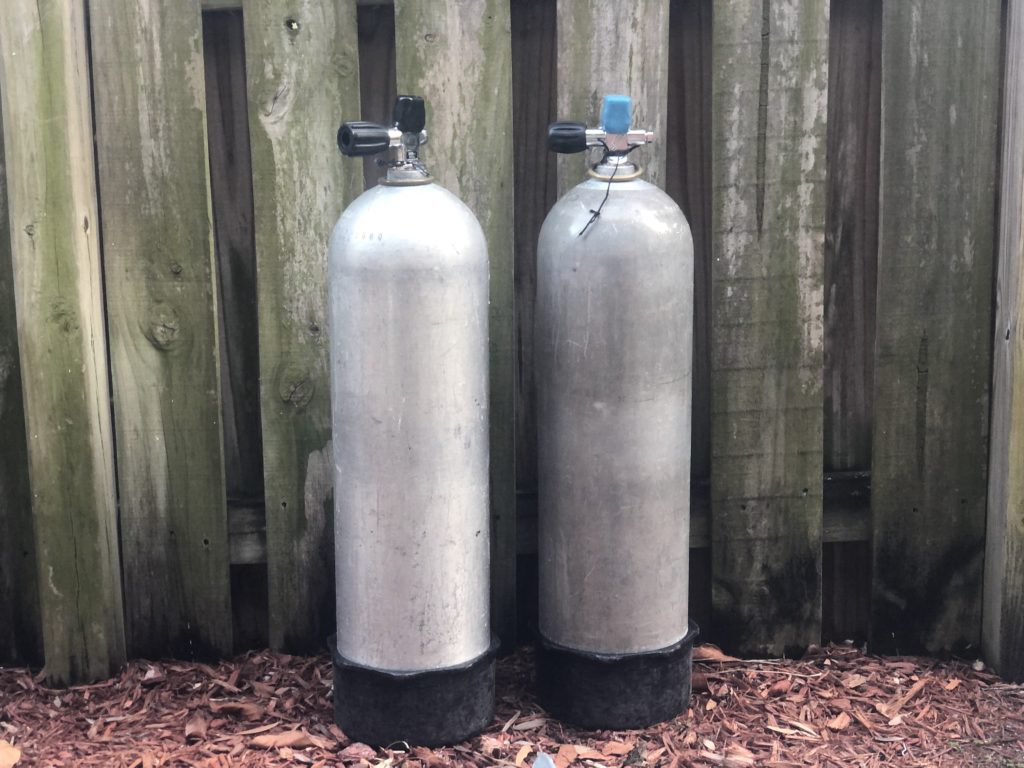
Questions You Should Ask When Buying a Used Scuba Tank
Upon inspecting a used scuba tank, these are the few questions you should have in mind:
1. When was the scuba tank last visually inspected?
In the United States, and typically around the world, visual inspections are required on scuba cylinders. Otherwise, dive shops will not fill your tank if it doesn’t have an official visual inspection sticker.
If the tank hasn’t been visually inspected in a few years, it may mean the owner hasn’t used it in a long time.
However, if it’s only been a year or two, you may be in the clear. Either way, expect to have to pay for a visual inspection yourself at the very least (it’s just a couple bucks at special dive shops).
2. When was the cylinder hydro-tested last?
Again, not a huge cost, but it needs to be done once every 5 years. A combo visual inspection and hydro-test can cost between $30 and $40.
If you find a used scuba tank for sale with a fresh hydro-test, that’s a good find.
How can you tell if a scuba tank has been hydro-tested?
After the hydro, the tester will imprint an expiration date on the cylinder itself. It typically appears as a month and year towards the top of the cylinder.
3. Where was the scuba tank stored?
Was it in a cool, dry place? (this is how a scuba tank should be stored).
Or stuffed away in a humid, outdoor space? (this is how a scuba tank shouldn’t be stored).
Why? Well, a humid storage space can lead to corrosion in the valve and beyond. You’d hate to purchase the tank only to find out the inside is completely messed up.
4. Does the scuba tank have pressurized air inside?
Go ahead and turn on the tank. Is there air inside? A scuba tank stored (even for long periods of time) with pressured air is likely to be okay on the inside.
If the scuba cylinder was stored empty, that opens up the opportunity for moisture to seep in and do some internal damage. A corroded or rusted inside of a scuba tank may need to be condemned.
How was the tank stored? Was it pressurized? Storing a scuba tank with pressurized air may be the difference between a quality tank or a hunk of junk. Scuba tanks stored in moist places with no air inside can be corroded inside and the entire tank will be condemned upon inside inspection.
5. Does the knob turn easily? Does the valve work?
Or does it jam up? Again, this could mean some corrosion occurred in the knob itself or your valve has gone bad. A likely result of improper storage.
A replacement valve is a costly ordeal, around $50. And and at that point, it may be a better idea to buy a new scuba tank instead.
Visually Inspecting the Tank Yourself
After asking all the proper questions, do a visual inspection yourself (although, you still need to have it professionally inspected for the official stamp of approval).
Are there any dents? Defects? Or noticeable scuffs?
Scuffs are one thing, dents are another. A scuba tank with a noticeable dent in the metal could be an indication of a much larger problem.
Is the valve dented? A scuba tank that’s been dropped on its valve could have a sizable, and costly, problem associated with it.
Weighing the Costs: New tank vs Used tank
Sit down and do the math. What costs are associated with the used scuba tank?
You should assume some but shouldn’t pay anything in excess.
Think about it: a used aluminum 80CF scuba tank for $80 that needs a replacement valve, a hydro-test, and a visual inspection could cost you up to $160. Conversely, a brand new aluminum 80CF tank on Leisure Pro is around $180. Which one would you rather have?
Honestly, it’s a numbers game. Just do your research and a thorough look over of the tank. If you ask and answer the questions above, and do a proper visual inspection yourself, you can find some amazing deals.
Buying a New Scuba Tank
Want to skip the hoopla? It’s much more costly, but it may be worth it to you.
Two online scuba shops do great work when buying scuba tanks: House of Scuba and Leisure Pro. Sift through their selection. They have it all and provide excellent customer service if you have any questions.

They have it all and provide excellent customer service if you have any questions.

Or shoot us an email, we’d love to help you with any questions you have.
Good luck and happy diving!
Enjoy this Post? Pin it!
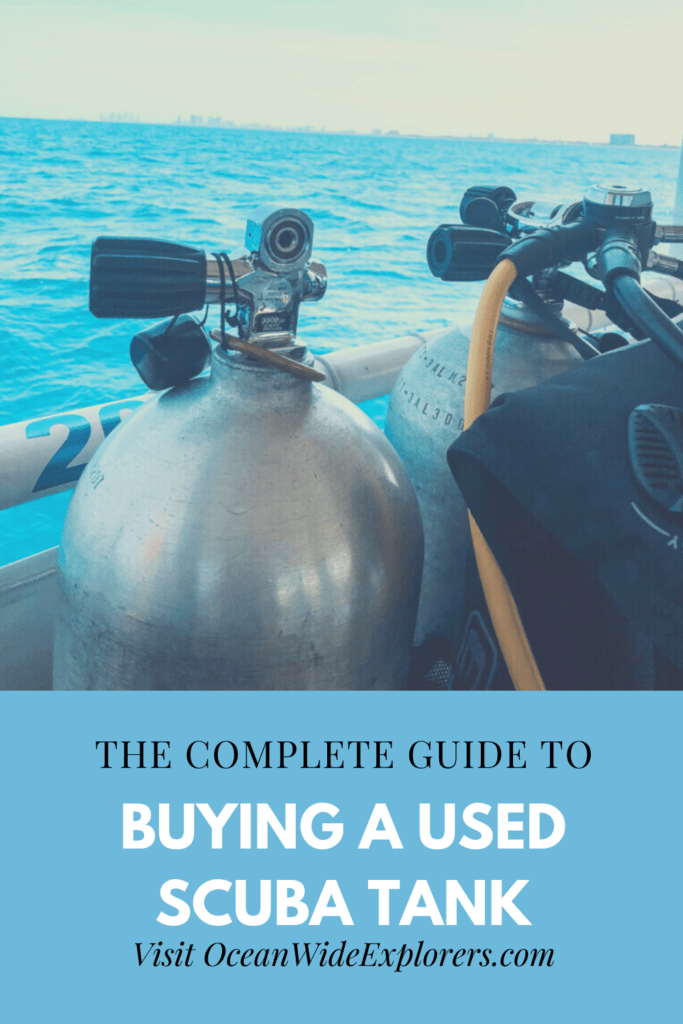
Read More About Scuba Diving Gear
We hope you enjoyed our post on buying a used scuba tank. Hopefully you’ll find it useful on your next adventure! Here are a few more ocean-loving articles we think you should read next:
- 7 Best GoPro Accessories for Scuba Diving
- GEAR LIST: Our GoPro Setup for Scuba Diving
- Complete List of Essential Scuba Accessories
- Lionfish Hunting Gear: Best Containment Units
Let us know if you have any questions in a comment below about buying a used scuba tank! We’d love to help!

